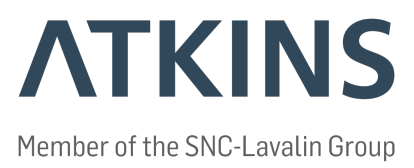FAQ
- How does the bidding work?
The bidding allows farmers to bid for funding to construct and maintain one, or multiple, measures on their land. To do this, the user can bid for an amount of funding for the bundle of measures they wish to implement. The tool will indicate whether their bid is "eligible", which means that it currently qualifies for funding. This, however, can change if other users submit lower bids (i.e. will implement measures for less money). If a user's bid changes from "elegible" to "ineligible", they will be notified via email, and they can then change their bid if they wish to do so. More information is found in the "How To" guide.
- How will I know if my bid is successful?
When you place a bid, you will be able to see whether it's currently eligible for funding. You will then be notified by email if the status of your bid changes (i.e. if someone outbids it, so it changes from "elegible" to "ineligible"). Once the bidding has closed, all applications will be assessed by a review board comprising specialists in agriculture, flood risk, natural flood management and nature-based engineering. The focus of the assessment will be value for money (i.e. cost to Highways England per cubic metre of water stored). Your catchment advisor may be in touch as part of the review board assessment clarify on your submission.
- Can I change my bid once I've submitted it?
The bids can be altered before the final bidding deadline. The default change is monetary to reduce the price of your submissions. This is to ensure that the bidding remains fair and competitive. If you've made a mistake or want to change the non-monetary details of your bid, such as the location, extent and effectiveness of your measure, you will need to contact us at NFMadvice@atkinsglobal.com. The Catchment Advisors and the NFM Fund helpline team will be reviewing bids as they come in and may be in touch about making changes.
- Who will be reviewing the bids?
During the bidding timeframe, the Catchment Advisors and the NFM Fund helpline team will be reviewing bids as they come in, comparing them against a database of costs and volumetric effectiveness to identify bids which are unexpected in design and outcome. We may be in touch about your bid in these cases. Once the bidding has closed, all applications will be assessed by a review board .
- What am I bidding for?
You are bidding for a grant for the planning, implementation and maintenance of NFM measures. More information can be found in the Fund Handbook.
- What are the interventions and measures?
More information is found on the Measures page and Intervention booklet. The intervention types specifically being promoted by the Fund are Land Use Management (LM), Overland Flow Route and Field Corner Measures (FR) and Watercourse Measures (WC). Each intervention type includes a range of NFM measures you can apply for. You are not restricted to just bidding to implement the measures listed in the Booklet. We welcome costed proposals for alternative NFM Measures. You can submit these alternative innovations as part of your bid.
- How can I ensure that my measure meets design and planning requiremenets?
If you are successful in your application for funding, you may need to develop your ideas further, especially if your proposals are large scale or complex. Simple designs make implementation easier and may be needed to support applications for permissions and consents . Your local Catchment Advisor is available to support you in working up designs for implementation and in securing necessary permissions and consents. They can also call on specialists in the design of NFM measures free of charge, if they are required. You should include the cost of your time and expenses to complete designs ("planning") for implementation in your bid.
- When and how will I be paid for implementing the measures?
More information is provided in the Fund Handbook.
- What are the contractual arrangements?
More information is provided in the Fund Handbook.
- Do I need to ensure my cost proposal is in-line with the guide prices provided in the Interventions booklet?
These are guide prices only and we appreciate that individual circumstances will lead to different costs to you submission. We will however undertake further checks on bids outside the guideline costs. During the bidding timeframe, the Catchment Advisors and the NFM Fund helpline team will be reviewing bids as they come in, comparing them against a database of costs and volumetric effectiveness to identify bids which are unexpected in design and outcome. We may be in touch about your bid in these cases. Once the bidding has closed, all applications will be assessed by a review board and we may be in touch again.
- What are the NFM simulation outputs in the blue boxes on the Bidding page?
This outputs are from an NFM model that simulates the suite of interventions being considered in this Fund. The interventions are simulated at a field scale, with volumetric estimates of attenuation from the interventions.
- What is the difference between the Flow Pathway Risk and Watercourse Opportunity spatial layers on the Bidding Page?
The Flow Pathway Risk mapping identifies potential flow pathway locations in the catchment; this includes runoff within and outside a watercourse. The Watercourse Opportunity mapping shows channels and watercourses within the catchment where watercourse measures (WC) should be located. Where the spatial layers overlap, the bidder should apply WC measure types.
- How is VAT considered?
The grant is outside the scope of VAT and therefore bidding costs entered should exclude VAT. If you are VAT registered, depending on your circumstances, you may be able to claim, via HMRC, any VAT from good and services you have procured with respect to this grant.
- How do I calculate the volumes required in bidding for the FR measures?
We recommend you contact to your catchment advisor or the NFM Fund Helpline if you require support on calculating volumes. To support volume calculations, you can also utilise an excel based volume calculator here.
- What is the maintenance period I am costing for?
This is outlined in the documentation provided, and is five years. Please ensure your total maintenance costs are for a five year period.






